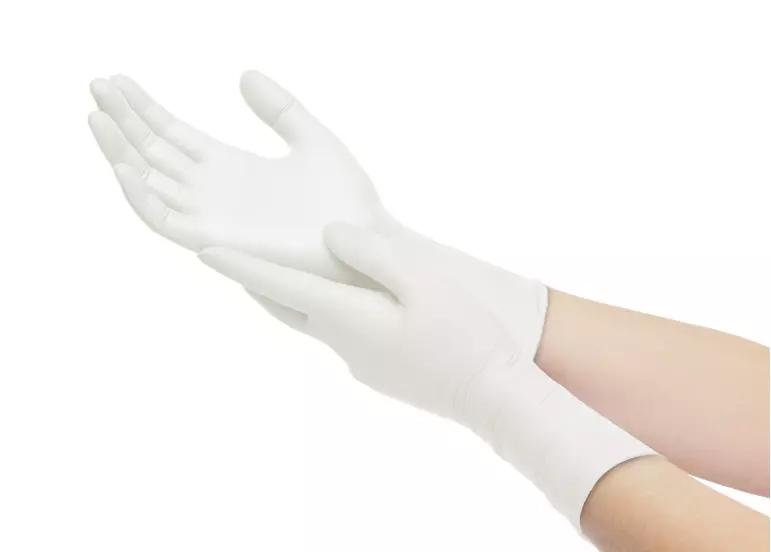Selecting the right gloves for cleanroom environments is critical to maintaining sterility, ensuring compliance with industry standards, and achieving optimal performance. By the end of this guide, you will have all the information you need to confidently choose the perfect nitrile gloves or other suitable glove materials for your cleanroom needs, from ISO classifications to material comparisons. Beyond gloves, we’ll also provide practical solutions for your next cleanroom challenges, ensuring you’re fully equipped to maintain a sterile and efficient environment.
To fully understand the topic, start with our comprehensive buyer’s guide on cleanroom gloves, which lays the foundation for selecting the right gloves for sterile environments.
Understanding Cleanroom Classifications and Their Requirements
Cleanrooms are classified by the concentration of airborne particles per cubic metre. The ISO standards (ISO 14644-1) define these classifications, ranging from ISO Class 1 (the cleanest) to ISO Class 9. Each level requires specific protocols, equipment, and materials—including gloves—to maintain cleanliness and sterility.
For instance:
- ISO Class 1–3: Used in microelectronics and nanotechnology, where even microscopic contaminants can be disastrous.
- ISO Class 4–6: Common in pharmaceutical and biotechnology environments.
- ISO Class 7–9: Suitable for less stringent industries, such as automotive or general manufacturing.
Selecting the Right Gloves for Each Cleanroom Level
Different cleanroom levels necessitate gloves with specific features. Below is a breakdown of glove recommendations for each classification:
| Cleanroom Classification | Recommended Glove Type | Key Features |
| ISO Class 1–3 | Sterile, powder-free nitrile gloves | Minimal particle shedding, electrostatic discharge (ESD) properties |
| ISO Class 4–6 | Latex or nitrile gloves, sterile | High durability, comfort, resistance to chemicals |
| ISO Class 7–9 | Non-sterile vinyl or nitrile gloves | Cost-effective, general contamination control |
Visit our cleanroom and sterile gloves collection to explore options tailored for each classification.
Why Material Matters: Nitrile, Latex, and Vinyl Gloves
| Glove Material | Key Features | Ideal Applications | Additional Notes |
| Nitrile Gloves | Low particle-shedding, chemical resistance, strong durability | ISO Class 1–6 cleanrooms | Top choice for clean environments due to minimal contamination risk. Learn more about their benefits in our Nitrile Gloves Buyer’s Guide. |
| Latex Gloves | Excellent dexterity, snug fit | Tasks requiring precision, where latex allergies are not a concern | Provides comfort and flexibility, but not suitable for individuals with latex sensitivities. |
| Vinyl Gloves | Affordable, basic contamination control | Lower-class cleanrooms (ISO 7–9) | Economical option, but less durable and offers limited chemical resistance. For guidance on selecting the best material, read our comprehensive disposable gloves guide. |
Key Considerations for Choosing Cleanroom Gloves

When selecting gloves for cleanroom use, consider the following:
- Particle Shedding: Opt for low-shedding gloves to maintain sterility.
- Chemical Resistance: Some environments may require gloves resistant to specific chemicals or solvents.
- Sterility: For higher classifications, choose sterile gloves to ensure compliance.
- Fit and Comfort: Tasks requiring precision demand gloves with a snug fit.
Our product collection includes various options that meet these criteria.
Secondary Cleanroom Supplies to Consider
Beyond gloves, maintaining a cleanroom requires other products to manage contamination effectively:
- Surface Cleaners: Essential for cleaning equipment and work surfaces. Explore our surface and floor cleaners.
- Degreasers: Ideal for removing heavy contaminants. Check out our degreaser products.
For industry-specific recommendations, refer to our Vinyl Gloves Guide or Chemical Resistant Gloves Guide.
Cleanroom Gloves and Compliance with European Standards
In Europe, compliance with EN ISO 374 standards is essential for chemical-resistant and protective gloves. Always verify that the gloves meet the required standards for your cleanroom classifications. Reputable manufacturers typically provide certification to ensure compliance.
To Learn more about European Safety Standards, check out this guide from Guidegloves.com.
Where to Buy Cleanroom Gloves
Ready to find the perfect gloves for your cleanroom? Explore our Cleanroom & Sterile Gloves collection for a curated selection tailored to your needs.
Final Thoughts
We hope this guide has been a valuable resource in helping you understand the essential factors for selecting the best gloves for cleanroom applications, from ISO classifications to material suitability. Whether you’re ensuring sterility in pharmaceutical production or maintaining precision in microelectronics, we’re here to support your cleanroom needs.
Explore the full range of Cleanroom & Sterile Gloves on Droppe, where trusted brands and quality products are just a click away.
Have questions or need tailored advice? Don’t hesitate to reach out—our team is always here to help you make confident, informed decisions for maintaining cleanroom compliance and efficiency.
– The Droppe Team
Frequently Asked Questions (FAQ)
The most common materials for cleanroom gloves are nitrile, latex, and vinyl. Nitrile is favored for its chemical resistance and low particle shedding, making it ideal for high-class cleanrooms. Latex offers excellent dexterity and comfort, but it may cause allergies. Vinyl is a cost-effective option for lower-class cleanrooms with less stringent requirements. Choose based on your cleanroom classification and task-specific needs.
Look for gloves certified under ISO 14644-1 for cleanroom use and standards like EN ISO 374 for chemical resistance in Europe. Reputable manufacturers provide documentation or certification to verify compliance. Always check product labels or request compliance certificates from your supplier.
Cleanroom gloves are typically single-use to prevent contamination. Reusing gloves, even if undamaged, can introduce particles or microorganisms into the environment, compromising sterility. Always use fresh gloves for each task or shift in a cleanroom setting.
No, powdered gloves are generally unsuitable for cleanrooms as they shed particles, increasing the risk of contamination. For cleanrooms, use powder-free gloves made from materials like nitrile or latex, which are designed to minimize shedding.
Store cleanroom gloves in a cool, dry place away from direct sunlight, heat sources, and chemicals. Proper storage prevents material degradation and ensures the gloves maintain their sterility and protective properties until use. Always check the expiration date before using gloves.

















